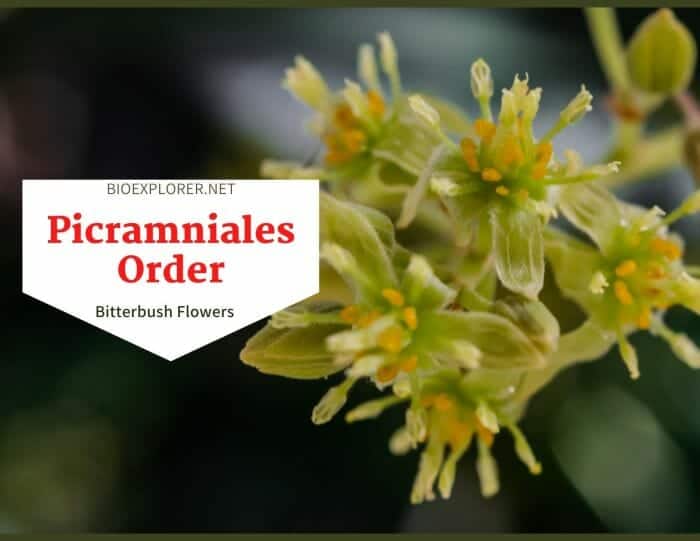
The Bitterbush order, Picramniales, are trees and shrubs with a neotropical distribution. Members of this order have bitter bark, alternate and compound leaves, alternate or sub-opposite leaflets, unisexual flowers, and non-arillate and non-endospermic seeds.
Most of the members of the Picramniales are vital for pharmaceutical purposes, such as the Picramnia pentandra and the Picramnia latifola.
Table of Contents
Picramniales Families
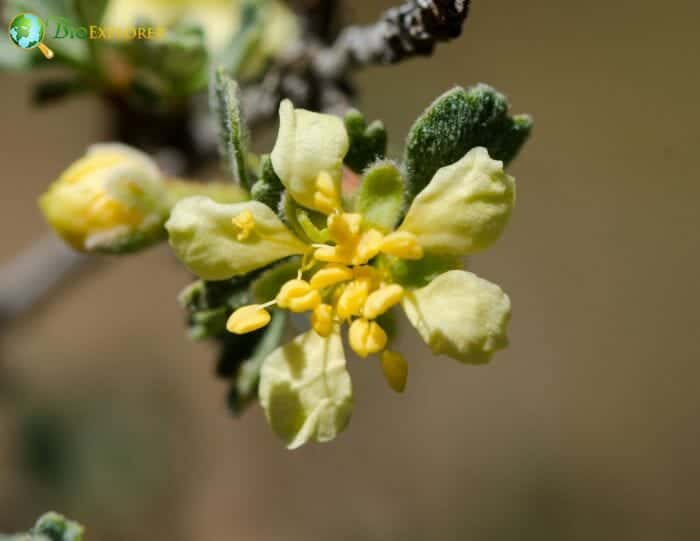
Picramniales is a small flowering order that belongs to malvids (eurosids II). It has only 1 family, 4 genera, and 50 species. The sole family of Picramniales is Picramniaceae[1].
![]()
Picramniales Distribution
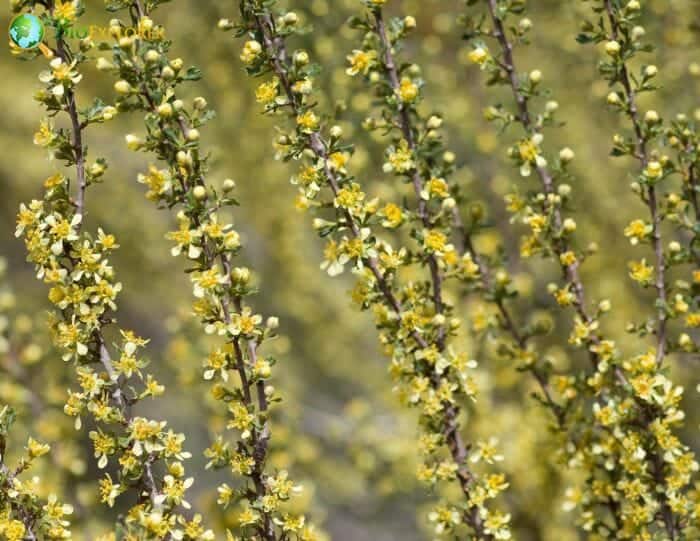
The members of the Picramniales are neotropical in distribution. The genus Alvaradoa members are found in Florida, Central America, and Bahama. There are also species found from Bolivia to Argentina.
The species of the genus Picramnia are found in the southeast USA, Caribbean, and Central and South America. The plants of the Nothotalisia genus are found in Panama and northwest South America. The only species of the genus Aenigmanu are found in Peru, Manu National Park, next to Brazil.
![]()
Picramniales Characteristics
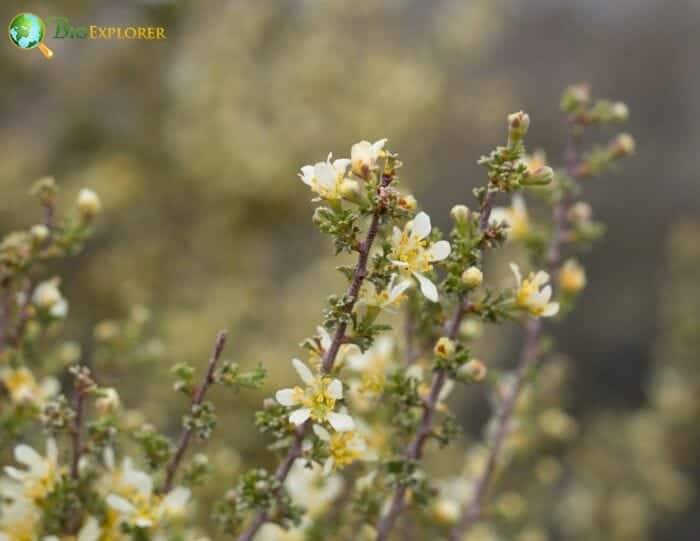
- Plant type:The members of the Picramniales order are trees and shrubs. In rare cases, there are subshrubs.
- Stem: The plants usually have a single stem. The wood of the plants is dense. The bark of the plants is bitter or very bitter.
- Leaves: The plants have persistent leaves. The leaves are cauline, alternate, and compound (imparipinnate). The leaves are exstipulateWhat is exstipulate?Without stipules; Stipule is a small structure of appendage found at the base of some leaf petioles. and petiolate. The leaflets are alternate or subopposite. The margins are entire, and the blades are often chartaceous.
- Flowers and inflorescences: The flowers are unisexual. The inflorescences of the flowers are simple racemes (terminal or lateral), pendent, or compound.
- Sepals and petals: The connate or distinct sepals of the calyxWhat is calyx?A collective term for all the sepals of a flower; the lowermost whorl of floral orgrans (Plural form is calyces). are usually (3-)5[2]. There are also (3-)5 petals in the corollaWhat is corolla?A collective term referring to the petals of a flower.. Other flowers lack petals.
- Stamens and carpels: The stamens of the Picramniales members are also (3-)5, and the carpels in the gynoeciumWhat is gynoecium?It is a collective term for all carpels (female parts) in a flower. Carpels can be either apocarpous (separate) or syncarpous (combined or united) are 1-4.
- Ovary and fruit: The ovaries of the Picramniales are superior and syncarpousWhat is syncarpous?Flowering having united carpels; Contrast apocarpous.. The fruit is a berry or samara.
- Seeds: There is only 1 seed per fruit, not arillate and non-endospermic.
![]()
Picramniales Flowers and Reproduction
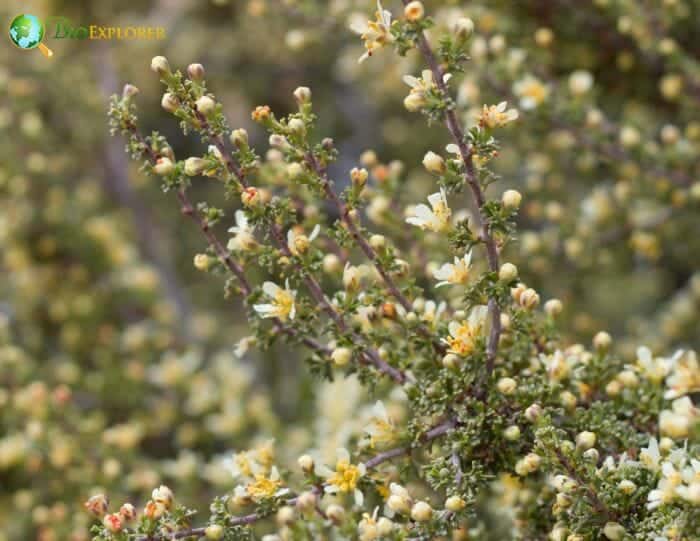
Picramniales flowers are minute, actinomorphicWhat is actinomorphic?A characteristic of the flower exhibiting radial symmetry such as starfish or Daisy flower; capable of being bisected into identical halves along more than one axis, forming mirror images. Opposite is Zygomorphic., and unisexual. These flowers are in the inflorescences of terminal or simple lateral racemes, pendent, or compound thyrsesWhat is thyrses?A panicle-like inflorescence which has one main indeterminate axis and many lateral axes which are determinate (example: Lilac).
- The perianth of the Picramniales flowers usually has 5 basally connate or distinct sepals. The corolla also often has 5 distinct petals. Often, the petals are ligulate, stramineous to maroon, or red. However, some flowers lack the petals.
- The stamens are 3-5; distinct and are positioned opposite the petals. The pistil of the flowers has 1-4 carpels, a superior ovary, and 2-4 styles. The flowers lack hypanthiumWhat is hypanthium?It is a floral tube created by the fusion of the basal parts of the sepals, petals and stamens; the rest of the flower parts emanate from this.. The nectaries are present.
- Picramniales flowers provide nectar and pollen for pollinating insects.
![]()
Picramniales Example Species
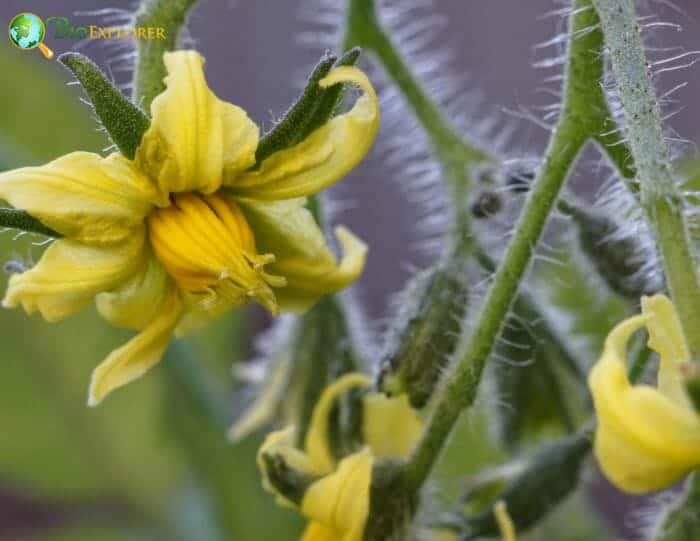
Most of the representatives of Picramniales are abundant in secondary metabolites[3]. Some of the members are vital for pharmaceutical purposes.
- Florida bitterbush – This plant is usually used for landscaping purposes. The Florida bitterbush is also used as a tonic.
- Mexican alvaradoa – Mexican alvaradoa is an excellent small tree or shrub for landscaping.
- Picramnia antidesma – The root bark of P. antidesma[4] is used to treat malaria in the tropical regions of America.
- Cedrinho – The Cedrinho tree is commonly harvested for its wood (fuel or charcoal).
- Picramnia pentandra – P. pentandra is used as an ornamental plant in Florida and Cuba. In addition, it is harvested in the wild for medicinal purposes. Wood is also used as fuel. In Agroforestry, the P. pentandra is used as pioneering natural species for woodland restoration.
- Picramnia latifola[5] – The P. latifola species possesses secondary metabolites known to have medicinal effects.
- Picramnia guianensis – The plant leaves are used as a source of dye. The bark is used in traditional medicine.
- Aenigmanu alvareziae
- Alvaradoa lewisii
- Nothotalisia cancellate
![]()











